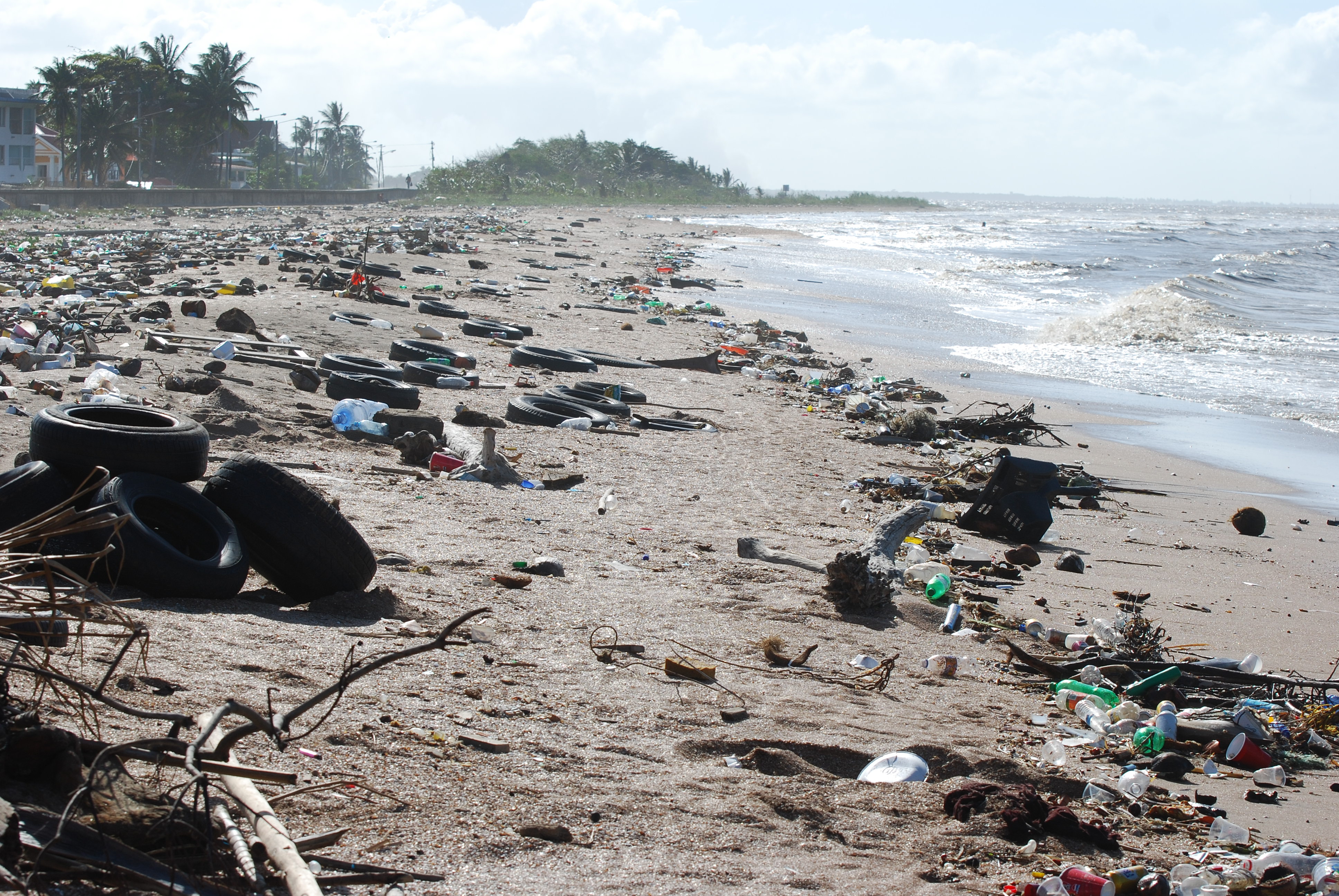Statistics point to the urgency of the urban planning and management of population growth in both countries. But it is also important to recognize the critical differences between the two countries. The changes in their ways of urbanization, as well as differences in their approaches to environmental policy, are likely to make the Indian population’s problem much more difficult to solve.
China is likely to continue to harbor 20% of humanity, yet for more than two decades, its birth rate was lower than "replacement" (which is necessary to maintain the current population), with the population growth, which is expected to become negative during the next two decades. As a result, India, where population growth is projected to remain positive in the near future, promises to be the most populous country in the world. Most projections suggest that India's population will exceed China's population by 2022.
In fact, over the next 35 years, it is expected that India will add more than 400 million urban residents (more than the entire population of the United States), while China - 292 million total. For the first time, the majority of Indians will live in cities - a significant transformation for the country, wich rural population which currently accounts for two-thirds of the total.
The two largest urban centers of India - Delhi and Mumbai - are often described as emerging global megacities. Delhi is the second most populous city in the world and is expected to overtake Tokyo, the largest city in the world, almost completely by 2030.
When population growth on this scale is combined with rapid urbanization, environmental and social impacts, caused by this, becomes a huge problem. In 2014, the World Health Organization (WHO) announced that Delhi has the worst air quality in the world (based on data on concentrations of particulate matter) and that Indian cities occupy the first four places in the ranking, and 13 lines from the top 18.
China often - and often rightly –has been criticized for poor environmental policy. But, according to McKinsey, China was more proactive in the planning of rapid urbanization than India, demonstrating that it has the ability and resources to solve environmental problems. The establishment of coastal greenways and urban reserves, complementary infrastructure projects that have environmental benefits (for example, the extensive public transport network) have already been included in the new cities plans across the country.
Cities of India, on the contrary, are formed spontaneously, not really looking at the functioning of urban systems as a single organism. For example, the urban areas of the country often do not have the appropriate maintenance of regional transport networks. Large illegal settlements, appeared in the undeveloped areas of the cities and their periphery, endanger the conditions of the environment, health and personal safety. The structure of land use in India is that there is a "weaving" of industrial and residential areas, which exposes the vulnerability (and growing) urban population to the mass of the negative side effects of this process.
The differences between urban development in China and India are seen not only in the nature of their policies in this area, but also in the style of leadership of the two countries. China's leaders made a special emphasis on the control of environmental pollution. On the eve of the Olympic Winter Games in 2022 in Beijing, authorities are trying to develop and implement an integrated regional plan aimed on balancing economic growth and environmental control, including the greening of production processes and the elimination of "overcapacity" in energy production.
Such efforts, implying involvement of managers of different levels, require coordination and stable vision, which provides a hierarchical system of Chinese control. In India, by contrast, the central government does not take part in solving the problems of air pollution. They are solved at the regions level. Regardless of what the administration of Prime Minister Narendra Modi decides to do, leadership of regions, under the control of various parties, often oppose or do not give it enough attention.
According to WHO, of the 4.3 million annual deaths due to "indoor air pollution" (burning of solid fuels), nearly one-third (1.3 million) occur in India. A recent report states that the more stringent rules of environmental regulation would add 3.2 years to the life of the Indians. This significant increase in welfare will also include economic benefits. Adding more than two billion "years of life" is a significant amount of human productivity, creativity, and in no way compensated contributions to family and society. Failing to adequately eliminate the consequences of rapid urbanization, India leaves these unclaimed benefits.
Honest, well-publicized official declaration would give the citizens of India and the world understanding that the country intends to protect its population from the growing life-shortening effects of environmental degradation in urban areas. It also pointed the way for improving the quality of life in urban India, benefiting local people, both directly and indirectly (by providing the inflow of foreign investments).
Competitive advantages of India in the new global economy are well known. However, social progress, transforming society, will be possible only if the country does not take more comprehensive efforts and not pay attention to the inevitable collateral damage from economic growth.
Original by Asit. K. Biswas and Kris Hartley, Project Syndicate
China is likely to continue to harbor 20% of humanity, yet for more than two decades, its birth rate was lower than "replacement" (which is necessary to maintain the current population), with the population growth, which is expected to become negative during the next two decades. As a result, India, where population growth is projected to remain positive in the near future, promises to be the most populous country in the world. Most projections suggest that India's population will exceed China's population by 2022.
In fact, over the next 35 years, it is expected that India will add more than 400 million urban residents (more than the entire population of the United States), while China - 292 million total. For the first time, the majority of Indians will live in cities - a significant transformation for the country, wich rural population which currently accounts for two-thirds of the total.
The two largest urban centers of India - Delhi and Mumbai - are often described as emerging global megacities. Delhi is the second most populous city in the world and is expected to overtake Tokyo, the largest city in the world, almost completely by 2030.
When population growth on this scale is combined with rapid urbanization, environmental and social impacts, caused by this, becomes a huge problem. In 2014, the World Health Organization (WHO) announced that Delhi has the worst air quality in the world (based on data on concentrations of particulate matter) and that Indian cities occupy the first four places in the ranking, and 13 lines from the top 18.
China often - and often rightly –has been criticized for poor environmental policy. But, according to McKinsey, China was more proactive in the planning of rapid urbanization than India, demonstrating that it has the ability and resources to solve environmental problems. The establishment of coastal greenways and urban reserves, complementary infrastructure projects that have environmental benefits (for example, the extensive public transport network) have already been included in the new cities plans across the country.
Cities of India, on the contrary, are formed spontaneously, not really looking at the functioning of urban systems as a single organism. For example, the urban areas of the country often do not have the appropriate maintenance of regional transport networks. Large illegal settlements, appeared in the undeveloped areas of the cities and their periphery, endanger the conditions of the environment, health and personal safety. The structure of land use in India is that there is a "weaving" of industrial and residential areas, which exposes the vulnerability (and growing) urban population to the mass of the negative side effects of this process.
The differences between urban development in China and India are seen not only in the nature of their policies in this area, but also in the style of leadership of the two countries. China's leaders made a special emphasis on the control of environmental pollution. On the eve of the Olympic Winter Games in 2022 in Beijing, authorities are trying to develop and implement an integrated regional plan aimed on balancing economic growth and environmental control, including the greening of production processes and the elimination of "overcapacity" in energy production.
Such efforts, implying involvement of managers of different levels, require coordination and stable vision, which provides a hierarchical system of Chinese control. In India, by contrast, the central government does not take part in solving the problems of air pollution. They are solved at the regions level. Regardless of what the administration of Prime Minister Narendra Modi decides to do, leadership of regions, under the control of various parties, often oppose or do not give it enough attention.
According to WHO, of the 4.3 million annual deaths due to "indoor air pollution" (burning of solid fuels), nearly one-third (1.3 million) occur in India. A recent report states that the more stringent rules of environmental regulation would add 3.2 years to the life of the Indians. This significant increase in welfare will also include economic benefits. Adding more than two billion "years of life" is a significant amount of human productivity, creativity, and in no way compensated contributions to family and society. Failing to adequately eliminate the consequences of rapid urbanization, India leaves these unclaimed benefits.
Honest, well-publicized official declaration would give the citizens of India and the world understanding that the country intends to protect its population from the growing life-shortening effects of environmental degradation in urban areas. It also pointed the way for improving the quality of life in urban India, benefiting local people, both directly and indirectly (by providing the inflow of foreign investments).
Competitive advantages of India in the new global economy are well known. However, social progress, transforming society, will be possible only if the country does not take more comprehensive efforts and not pay attention to the inevitable collateral damage from economic growth.
Original by Asit. K. Biswas and Kris Hartley, Project Syndicate



















